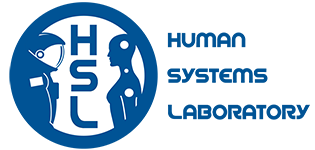Exercise During Short-Radius Centrifugation
Laurence R. Young, Ana Diaz, Chris Trigg
Traditional countermeasures against the adverse effects of prolonged weightlessness, such as exercise, resistive garments and lower-body negative pressure, appear to be insufficient in practice and are often too inconvenient for astronauts. AG represents a potential countermeasure that is unique. It promises salutary effects on bone, muscle, cardiovascular and vestibular function. Rather than alleviating the symptoms, it attempts to remove their cause. Although long a favorite topic of scientists and science fiction authors, it is only now receiving serious attention for space flight experiments and validation (Young, 1999). Several recent task groups and countermeasure workshops conducted by NASA have refocused attention on AG for extended missions. Spacecraft size dictates that any AG centrifuge tested in the foreseeable future be of limited radius (on the order of 1-3 m). The largest diameter human centrifuge being considered for installation on Spacehab, is under 2.5m in diameter, thus permitting a short astronaut only to sit or bicycle, but not to stand up. Centripetal accelerations on the order of 1 g (9.8 m/sec2) at the rim will therefore require relatively high angular velocities (on the order of 30 rpm). At these speeds, AG will create disruptive sensory effects as soon as the astronaut starts to move. Limb movements are deflected and, more importantly, head movements cause unexpected semicircular canal inputs as the result of Coriolis cross-coupling between certain head movements and centrifuge rotation. One might argue that during brief centrifugation on a short-radius centrifuge (SRC) the head is best restrained to eliminate disturbances. Indeed, this is the approach taken by the Nihon University group. However, restraining the head seriously limits exercise, recreation, and comfort in the device. Movement is mandatory during long-term centrifugation (e. g. in a rotating spacecraft) and it is desirable during intermittent centrifugation (e. g. when combined with exercise). Thus, AG for in-flight gravity replacement therapy requires that crewmembers be capable of rapidly adapting to the unexpected canal inputs with minimal side- or after-effects. Furthermore, it will be essential for astronauts to retain the adaptation to the 0-g state in order to avoid "Space Adaptation Syndrome" each time they transition from the centrifuge to weightlessness. From 1999-2007, we had an extensive reserarch program on the problem of Adaptation to Artificial Gravity.
In our ongoing experimental efforts we address some of the most important research questions regarding exercise during short-radius centrifugation. We are developing a prototype exercise system which is mounted onto our MVL centrifuge and have performed some preliminary tests on the hardware.
